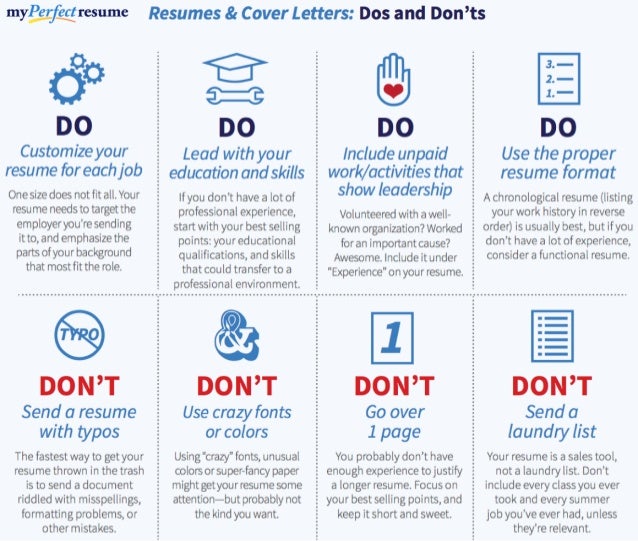DON’T use multi-coloured text or too many different font sizes. Italics, underlining, shading, graphics and vertical/horizontal lines or boxes are also best avoided.
DO keep your resume length to a minimum – two or three pages is ideal. Print in black ink, on one side of each sheet of A4 size paper, and choose fonts like Verdana, Arial, Calibri or Times. Include lots of white space and break up your text as much as possible using subheadings and bullet points to aid scannability. Short, sharp chunks of text work best.
DON’T include personal details such as your date of birth, marital status or photo (unless you are applying for a job where these are relevant).
DO include a link to your website, if you have one (and if it’s related to your work). Whether it’s a website or blog, or a Twitter, LinkedIn or Instagram account, an online presence can really boost your image and get you taken more seriously, especially for careers in the media, creative industries and IT.
DON’T make vague statements. Give facts context by backing them up with real examples. For instance, don’t just say, “I have excellent communication skills”. Instead, say: “My excellent communication skills have been fine-tuned by… and proved invaluable when…”
DO, wherever possible, quantify your achievements. If you can say, for example, “increased sales by $50,000”, “reduced turnover by 34%” or “increased website traffic by 125%” rather than making a more general claim, that will give your assertions more weight and clarity.
DON’T use a PDF format for your resume, especially for less IT-heavy industries, as some software won’t be able to read it easily. Most companies prefer Word (.doc/.docx) files wherever possible.
DO use testimonials from previous employers. Consider adding them to your resume as hyperlinks, linking them to an employer testimonial on your LinkedIn profile or website (if you have one).
DON’T forget to tailor your resume for each job application. The more precisely you address each of the criteria for the particular job, demonstrating how you fit and satisfy the criteria, the greater your chances of making the shortlist.
DO proofread and spell-check – and check again. A recent CareerBuilder survey found that 58 per cent of resumes contain typos. Make sure yours isn’t one of them! If you’re often going back and tweaking or updating your resume, typos, spelling mistakes and formatting issues can creep in. Doing so can easily create a mismatched subject and verb or knock a sentence out of alignment. Re-read the resume in its entirety each time you make an amendment.


